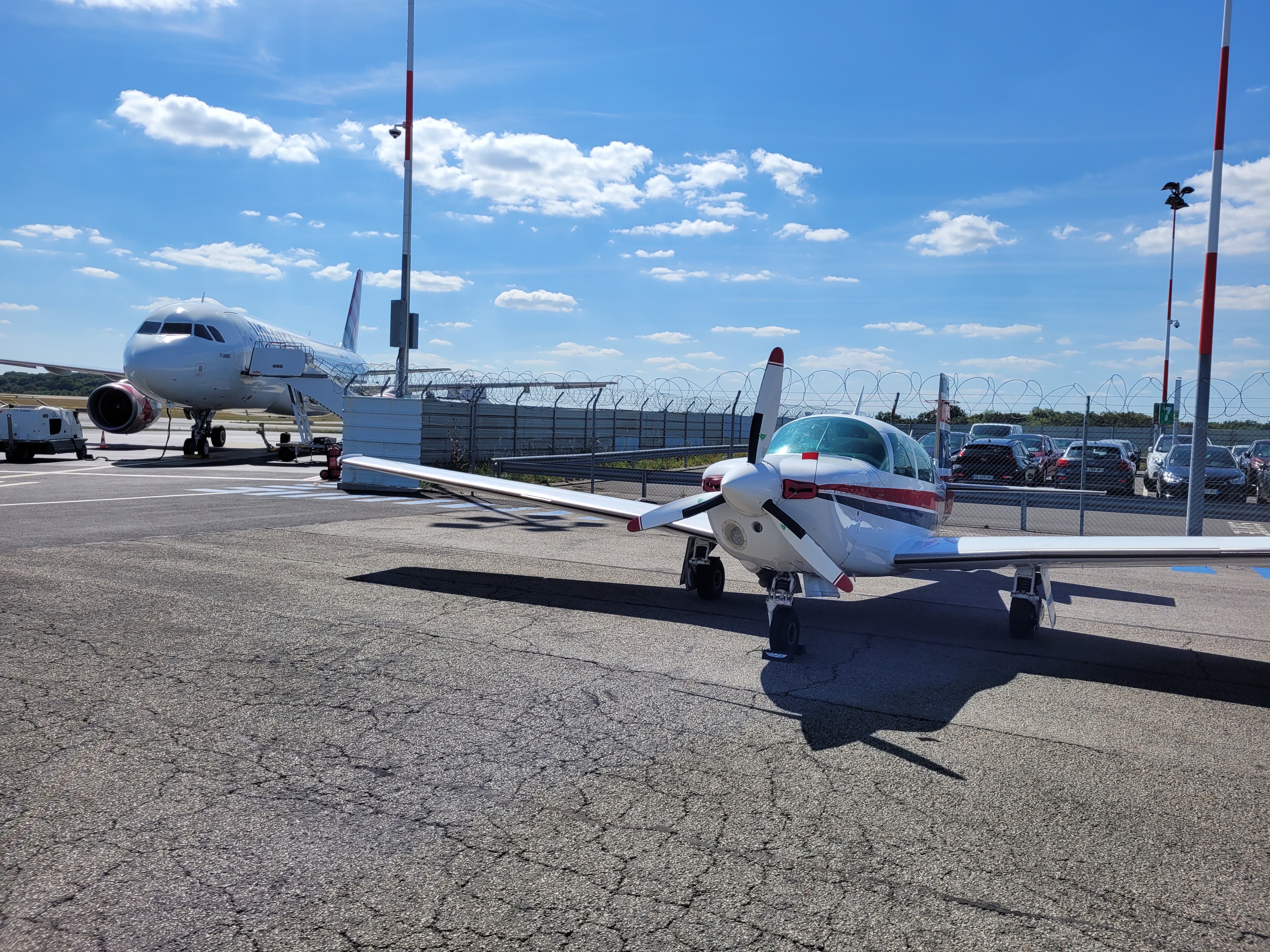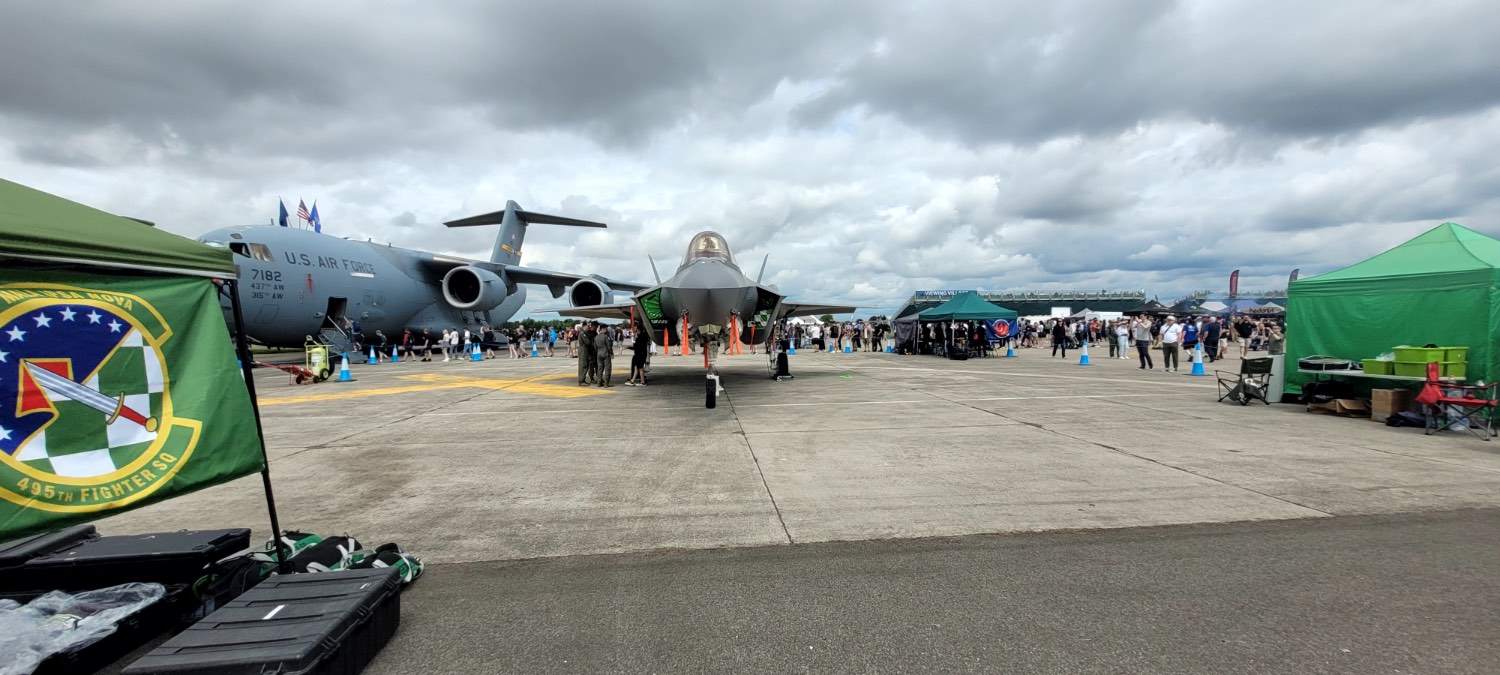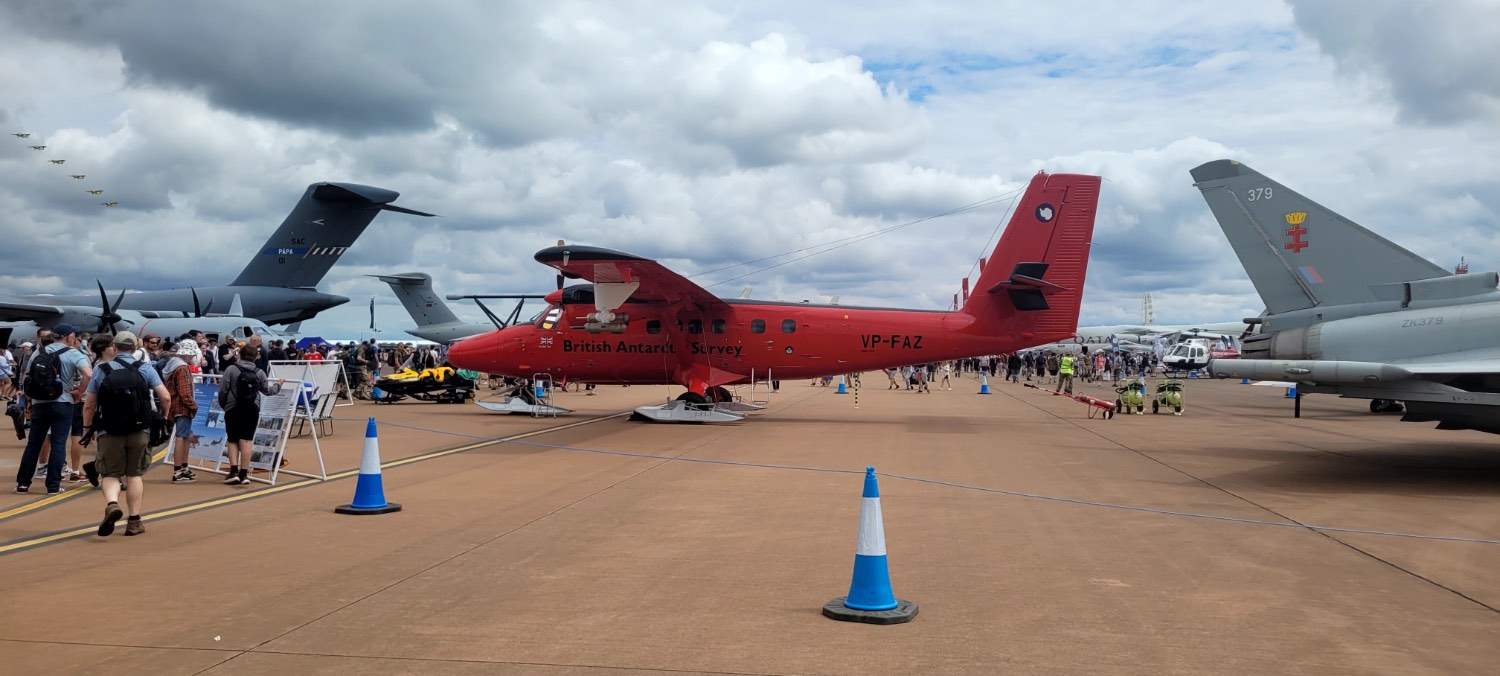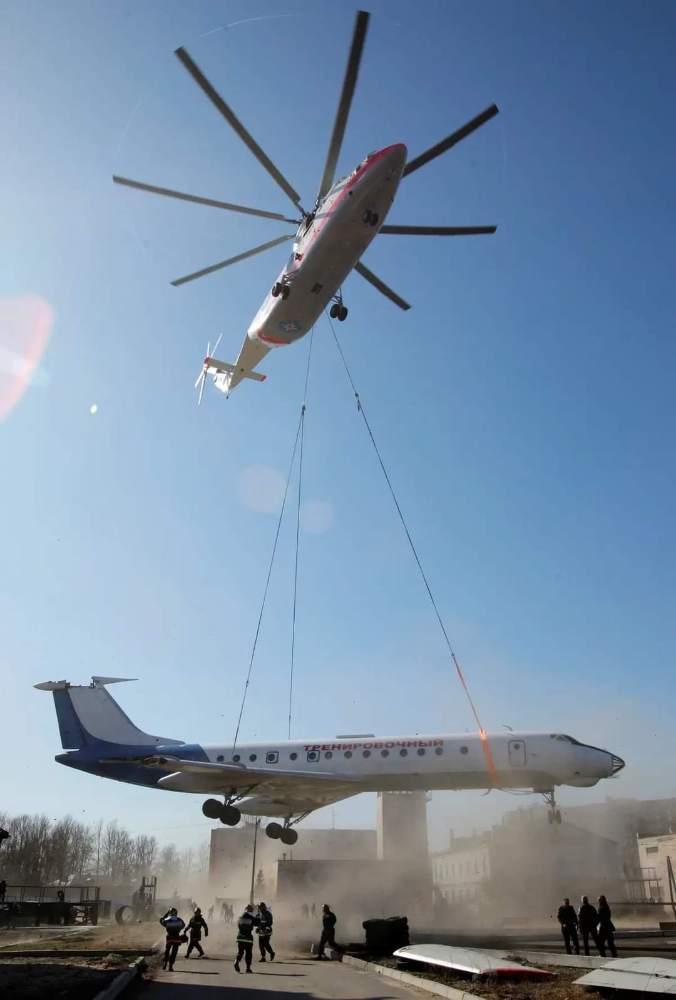-
Posts
989 -
Joined
-
Last visited
Ibra's Achievements
-
This weekend trip to UK visiting Oxford and then RIAT at RAF Fairford, interesting line up this year with visiting F16s from dozens of allies air forces, the British weather did not cooperate for “proper 3D display”, so they flew “2D figures” Not as exciting as camping between propellers in Oshkosh
-
We have something similar under 800m RVR (or 1200m RVR) to get down to 550m RVR when flying mono-pilot. Funnily, it was never a hard law for private operations only a guidance (ATC still enforce it) ATC: "Cleared for approach, Report going around" PIC: "We are landing...runway vacated" ATC: "How?" PIC: "Using operator visibility credits" I think everyone forgot that they need another clearance to land (as approach clearance is not enough) The guidance says you need coupled auto-pilot and HUD/EVS. In reality, it's Synthetic-Vision and slow speed on short final helps... I think to get extra DH one has to seek operator approvals (I am keen on gunsight, I will STC one of these)
-
We had one M20E visiting France from Canada, we helped with oil change and had a lengthy chat about the adventure. The kid was impressed that "small Mooney" can fly over Atlantic !
-
This video (not listed) summarises GAMI testing of G100UL on SR22 sealant
-
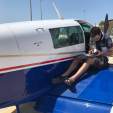
G100UL - Martin Pauly YouTube video
Ibra replied to EarthboundMisfit's topic in Miscellaneous Aviation Talk
Indeed, I think that is enough for SR22, one can argue that G100UL was mainly for SR22 engine and airframe (being the only piston that is sold in enough numbers) I was thinking about other airframes like Mooney? we have wet wings and quality of sealant in tank is a big concern for Mooney owners. On Avgas 100LL, some lucky Mooney owners still fly with factory sealant, the unlucky ones tend to redo it every 15 years -

G100UL - Martin Pauly YouTube video
Ibra replied to EarthboundMisfit's topic in Miscellaneous Aviation Talk
Yes for airframe materials, it's not clear what are adverse effects and testing may require long term feedback than "next 6 months"? GAMI "secret ink" to get higher octane (alkyl benzene) seems to available around and it's used in printers (it does not sound to be harmful even when mixed with food packaging in stores) https://www.researchgate.net/publication/279625885_Analysis_of_alkyl_benzenes_in_printing_ink_on_food_packaging_materials_and_its_migration_by_gas_chromatography-mass_spectrometry Alkyl Benzene does not sound like making TEL or Freon (one guy made both of them at General Motors), it's already something used in everyday life applications: ink, soap, shampoo, toothpaste, laundry...the only caveat it seems that most of these applications are for detergents !! For other ingredients (aromatics and stabilisers), we will have to see -

G100UL - Martin Pauly YouTube video
Ibra replied to EarthboundMisfit's topic in Miscellaneous Aviation Talk
GAMI has responded to Cirrus https://www.avweb.com/aviation-news/gami-responds-to-cirrus-g100ul-service-advisory/ It seems like an overreaction (extrapolation from one single aircraft incident? one data point statistics?), however, the concern about new aromatics in unleaded fuels and fuel tank sealant is something every Mooney pilot would take very seriously Does anyone know if GAMI tested their G100UL in Mooney airframes? GAMI tested G100UL on SR22 extensively, as it's the main candidate, I doubt they missed this? in any case, it does not sound like a problem with the engine, rather concerns about tank material compatibility -

G100UL - Martin Pauly YouTube video
Ibra replied to EarthboundMisfit's topic in Miscellaneous Aviation Talk
Out of all these, the only candidate who have promising on “PAFI route” are VPRacing, they already have something similar to their C10 fuel that apparently passed initial PAFI testing in 2023 and now they have 6 months or 1 year to come up with “ASTM Avgas”. Yes in the past, VPRacing did lot of “high octane and/or high etanol” Mogas with ratings that would exceed 100LL (E102, M103, VP-C16, X98..), however, many of these will eat lot of rubber in an aircraft and they do lot of oxygen bubbles: they do not work in aircraft airframes (unless one put lot of pressure on fuel tank and fly full power at sea level). We will see if they can make an Avgas? If you look at their fuels, it’s hard to get octane (MON) > 100 without lead (TEL) or oxygen (O2) https://vpracingfuels.com/master-fuel-tables/ For “STC route”, we have GAMI G100UL (and Swift UL94), these seems to do the job for octane, however, we will hear more and more about new aromatics: it seems engine and airframe manufacturers are not too keen (Lycoming are not touching G100UL with barge pole, I am not sure if it’s fear of change, fear of liability or something well founded) Does anyone knows what G100UL is made from? other than “ink” -
This come up yesterday, https://www.avweb.com/aviation-news/cirrus-service-advisory-cites-gami-g100ul-as-unapproved-for-sr-series/ Funny enough, yesterday I was talking with head of maintenance shop and discussing which manufacturers limitations are legally binding for private flying in EASA and FAA registered pistons, these are clear as mud when one digs into them. Then, we talked about composite airframe limitation (12000h) or calendar limitation (10 year chute repack, 2 year rocket battery) that are listed in FAA TCDS/ALS but gets omitted in EASA TCDS for Cirrus, Gliders, Bristells, Dimaonds Long story short, some manufacturers have power when it comes to product airworthiness or warranty, while others are not !
-
We saw them in UK (EGTH & EGSX) and France (LFRK), it's impressive that they fly every year on tour in good shape: kudos to all volonteers, pilots and mechanics ! I think they are heading to Venize LIPV this weekend
-
The runway is short, and 45 minutes drive with expensive hangar? this does not sound very impressive to what you have already? If I have 3000ft paved non instrument runway with night lights 5min from home at 50% price, that would get my vote. For weather, we can go ILS circle to land and slide on GPS guidance to join VFR patterns elsewhere Like anything in aviation, it depends when, where, how...also needs practice and familiarity with wise choice of weather minima with some dispatch rate tradeoff In my homebase, I only go IFR under pattern or vectoring altitudes 1 in 10 flights and down on ILS & LPV minima about 1 flight in 100h flying. Being in IFR airport, is mostly about peace of mind during pplanning or middle of holiday rather than actual use, if one hhs some flexibility, you can get the same utility from nearby VFR airfield If you have aircraft 10min nearby in VFR airport, you "will" fly more often on good weather days if you have it in IFR airport with 2h drive, you "can" fly more often on bad weather days
-
We have one helicopter based at my home base who does these retrieves, I was told they can carry 2500lbs which would work with lot of single engine pistons at empty weight (especially without engine) They did pick one PA28 early this year, https://www.leparisien.fr/seine-et-marne-77/nanteuil-les-meaux-un-avion-heliporte-sur-plusieurs-kilometres-jusqua-laerodrome-29-02-2024-HLGEXQ2JDRGNFFWKGYEZKXKCUQ.php MI26 should do it for heavy jets (even with engine)
-
Indeed, propeller TKS does not help with fuel blockage in reservoir or gascalator. However, it helps in other places and anyway TKS fluid never hurts an engine !
-
It help with engine sensor icing (if it's fuel servo icing of course) If the fuel itself that is iced up in the pipes (not just at sensors or servos), well there is not much TKS can do (neither fuel pump or anything else for that matter) In any case, it's hard to tell if it's an induction icing or servo icing or both? (unless you have oxygen sensors and dig all engine data on-the-fly right before the fan quits), we just throw propeller TKS on whatever ice forms out there in front of windshield, push fuel pump and change tanks, move engine controls and open alternate air: then hope for the best !
-
Glad all sorted out to collect aircraft and well done managing it Lycoming engines will tolerates 1% alchool (IPA) which is what people use to prevent fuel icing (I know one twin Aztec that went down). Mooney Service Instruction says max 1% for Lycoming altough goes for 3% in POH of some turbo models (M20K maybe as it goes to FL280?), the limit is likely for both engine run and long term integrity of fuel systemo Not sure how if yours was fuel icing? it happens https://www.euroga.org/forums/flying/3908-fuel-servo-icing It could be an induction problem? I had the same in SR22 without propeller TKS de-ice, there is not much one can do, especially no mannual alternate air control... https://www.euroga.org/forums/flying/4215-in-flight-icing-incident-in-cirrus-sr22t-fiki?page=1 The other thing on restart with powerful turbos, you are unlikely to be able to retart once it completely stopped. I think it needs to get back into "normally aspirated" enveloppe with dense air before it kicks again POH recomands fuel pump ON (and using mannual alternate air for induction), I wonder if the pump is for vapour pressure issues rather than frozen fuel servo. However, it will always help to keep fuel flow going TKS from propeller helps to prevent engine icing (induction icing or fuel icing that can happen even when clear of clouds without airframe ice), it's alchool isopropyl after all

